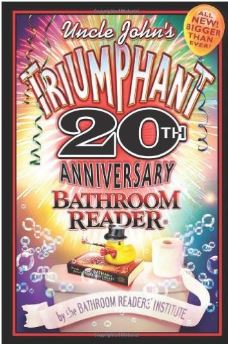The Forgotten Memory Palaces
 How did people in ancient times remember things when they had no computers, books, or even paper? The only way they could: in their heads, where they created a special place for information to reside.
How did people in ancient times remember things when they had no computers, books, or even paper? The only way they could: in their heads, where they created a special place for information to reside.
BACKGROUND
Mnemonics is any system of mental touchstones that helps you to retain larger amounts of information. (The word comes from Mnemosyne, the Greek goddess of memory.) A mnemonic device can be as simple as a word, such as “HOMES,” to remember the names of the Great Lakes: Huron, Ontario, Michigan, Erie, and Superior. Or a song, such as Rodgers and Hammerstein’s “Do Re Mi” (“Doe, a deer, a female deer / Ray, a drop of golden sun / Me, a name I call myself….), through which many people learned Do Re Mi Fa So La Ti Do, the notes of the musical scale. One of the most elaborate mnemonic devices ever devised was the memory palace, an intricate, often beautiful way to store information in “rooms” of the mind.
HIS HEAD WAS HERE…
The person credited with inventing the concept of mnemonics was the ancient Greek poet Simonides of Ceos. Some time in the 5th century B.C., Simonides’ incredible abilities regarding memory were revealed when he was a witness to a great catastrophe: He had just left a banquet where he had recited a poem for the crowd when the building collapsed. According to legend, the corpses were so badly mangled that no one could be recognized. Yet Simonides supposedly remembered the exact location and specific details about every guest at the banquet and was able to identify them to their relatives for burial.
From this experience, Simonides devised a system in which he memorized images—or mental pictures—as if he could see them in a particular place, in a specific sequence, so that they could be recalled later, exactly as they had appeared in real life. At a time before pen and paper were readily available, he had to rely on his visual sense, improving his memory by “storing” things in his mind as if he were writing them down. This system of mnemonics came to be called memoria loci (literally, “memory locations”), or “memory palaces.”
PALACE REVOLUTION
To build a memory palace, you need mental places and images.
- The place should be one that you’re very familiar with—your house, a library, a school. It can be as ornate as a palace or as simple as one four-cornered room, like a bedroom.
- Images are representations of whatever it is that you want to remember. They can be living beings, inanimate objects, or symbols—and the more vivid the better. If you want to remember something concrete, such as a lion or a tree, you might simply picture a lion or a tree. If you wanted to remember a more abstract concept, you might create a representation to stand in for that concept. For example, an image of your sister to represent motherhood, or a five-pointed star to represent the solar system. It’s like using a special system of writing. Once you learn the “alphabet,” you can use it to “write down” information.
If there’s more you want to remember, you can create more places in your mind. If a room becomes cluttered, knock out a back wall, and build another room. Add a staircase or furniture. The place is essentially a blank page in a notebook, and each new idea you want to write down takes the form of an image. You can use any combination of rooms and objects as long as you commit the details to memory. And you do this by observing specific rules, like following the same order every time you “walk” through the memory palace.
EXAMPLES
Simonides and his contemporaries used memory palaces for very high-minded concepts, but to get the idea of how they work, we’ll use a more common example. Say you have an acquaintance whose name and birthday you can never remember. Her name: Ginger Weinhardt. Her birthday: March 17.
Walk into your memory palace, and then walk down the hall and into the room you have reserved for remembering people’s names. (Yes, you do have one.) You have the walls in the room divided into 26 sections—one for each letter of the alphabet. When you get to the room, turn to the right (that’s one of the “rules” that will help you next time you use the memory palace) and walk to the section marked “G.” Now put a picture of your friend Ginger on the wall—and below that, imagine a gingerbread man. Really look at the picture. See her face and all the details of her face…and do the same with the gingerbread man. Keep them in that room, and you’ll be able to go back to it any time and say, “Ginger! That’s her name!”
Put a shelf on the wall next the picture, and put a glass of wine on it—right next to an actual beating, bloody heart. (Remember: Vivid images work the best.) Wine…heart…Weinhardt! That’s her name! Now put a calendar and some “marching” toy soldiers on a shelf next to the beating, bloody heart. Put 17 marching toy soldiers on it for “March 17.” Now you’ll remember her birthday, too.
The trick, as you might have noticed, is repetition. If you picture the scenario we just created only once, you might remember it, but then after a while you’ll probably forget it. If you really want to develop the skill, you have to walk through your memory palace and look at all the things you’ve placed in it on a regular basis. After repeated use you’ll be surprised at how simple and natural it is to walk through the palace to remember things.
THROUGH THE AGES
Memory palaces aren’t commonly used today, but in ancient times they were, and by some of history’s greatest scholars. Greek philosophers like Aristotle and Plato believed it was as important to strengthen the memory as it was to strengthen the body. Memory was a significant part of rhetoric—the classical art of speaking and writing effectively. Nowadays we have books, CDs, databases, and other recording media, but in ancient Greece and Rome the study of language was an almost completely oral exercise. To be able to persuade and influence an audience took a great deal of skill. It was an art for which one needed talent, discipline, and practice. Here’s how the memory palace was used through history.
- The Romans. As they did with all great Greek ideas, the Romans also adopted the memory palace concept. The great senator and philosopher Cicero wrote about Simonides and memory palaces in De Oratore (c.55 B.C.), saying that using what he called the art of memory allowed one to retain volumes of knowledge, much of it lying dormant until brought to the forefront by “meditation of the eyes.” Another ancient book, Ad Herenium (c. 85 B.C.) promoted the idea that using vivid images made them easier to remember. Example: Picturing human figures dressed in purple cloaks or wearing jeweled crowns; or to make them even more memorable, the book said, one could “disfigure them, as by introducing one stained with blood or soiled with mud or smeared with red paint.”
- The Christians. Most European scholars and teachers in the Middle Ages (400–1500) were Christian monks and priests. In their fervor to “bring the Bible to life,” they expanded the use of memory palaces. Many religious students meditated on the Bible by mentally placing images of people they knew into scenes from the Old or New Testament, so that they could “feel” the same things as the saints and angels, or the disciples…or Jesus himself. Some even made religious paintings from the scenes they’d imagined in memory palaces, and then used the paintings to meditate on. These were among the first paintings to give Jesus or his disciples physical form as opposed to symbolic representation, like the sign of the fish.
- Occultists. During the Renaissance (1300–1700), memory palaces were used in occult practices. An Italian monk, Giordano Bruno (1548–1600), devised intricate memory palaces that he claimed actually tapped into the powers of the cosmos. Using the 12 houses of the zodiac as the foundation for a memory palace, Bruno fashioned detailed “wheels of memory” in which each spoke held thousands of ideas full of esoteric knowledge based on ancient teachings. By invoking the power held in the images placed on the wheels, he believed he could harness the forces of the universe, including planets and stars, wind and water, even the thoughts of all the great men in history whose collective knowledge was now part of the cosmos. The objective was not just to exhibit mastery over magic, but to draw himself closer to God by being like God—omniscient and all-powerful. Not surprisingly, such ideas were viewed as blasphemous by the Catholic church. The Inquisition wasn’t a good time to equate oneself with God, or to suggest that you could have the same cosmic powers as God. In 1600 Giordano Bruno was put on trial for heresy and burned at the stake.
 This article is reprinted with permission from Uncle John’s Triumphant 20th Anniversary Bathroom Reader. This behemoth of a book is jam-packed with 600 pages of all-new articles (as usual, divided by length for your sitting convenience). In what other single book could you find such a lively mix of surprising trivia, strange lawsuits, dumb crooks, origins of everyday things, forgotten history, quirky quotations, and wacky wordplay? Uncle John rules the world of information and humor, so get ready to be thoroughly entertained.
This article is reprinted with permission from Uncle John’s Triumphant 20th Anniversary Bathroom Reader. This behemoth of a book is jam-packed with 600 pages of all-new articles (as usual, divided by length for your sitting convenience). In what other single book could you find such a lively mix of surprising trivia, strange lawsuits, dumb crooks, origins of everyday things, forgotten history, quirky quotations, and wacky wordplay? Uncle John rules the world of information and humor, so get ready to be thoroughly entertained.
Since 1987, the Bathroom Readers’ Institute has led the movement to stand up for those who sit down and read in the bathroom (and everywhere else for that matter). With more than 15 million books in print, the Uncle John’s Bathroom Reader series is the longest-running, most popular series of its kind in the world.
If you like Today I Found Out, I guarantee you’ll love the Bathroom Reader Institute’s books, so check them out!
| Share the Knowledge! |
|




